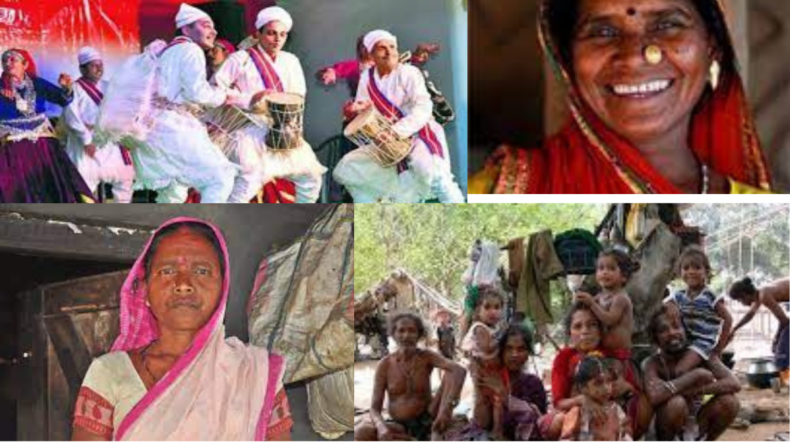The long wait is over for the tribal communities, who are demanding inclusion on the ST list. The decades-long struggle will pay off once the bill is passed in both houses and gets the president’s accent.
Recently Union Cabinet under the chairmanship of Prime Minister Narendra Modi approved the inclusion of four tribal communities of Tamil Nadu, Chhattisgarh, Himachal Pradesh, and Uttar Pradesh to the ST list.
The inclusions of tribes are Narikuravars, Kurivikkaran from Tamil Nadu, Hattis from Himachal Pradesh, Binjhia from Chattisgarh, Gond and its five sub-castes from Uttar Pradesh. Karnataka’s Betta Kurba is a synonym for Kadu Kuruba and cabinet-approved synonyms for 11 tribes in Chhattisgarh.
Backdrop of Narikuravars.
The Narikuravars, an indigenous and semi-nomadic hill tribe of Tamil Nadu are once categorized under the criminal tribe’s act of 1871, during British rule. After Independence, Narikuravars were decriminalized under the Denotified Tribes Act 1952.
The demand for the inclusion of Narikuravars and Kurivikkaran communities in the ST list dates back to 1965. The report of the advisory committee on the revision of the lists of scheduled castes and scheduled tribes a.k.a Lokur Committee in 1965 recommended granting ST status for Narikuravars.
A joint parliament committee in 1967 also recommended the Narikuravars into the ST List of Tamil Nadu. Since the 1965 recommendations, many chief ministers of Tamil Nadu have demanded ST status but it got approval only after 57 years.
Highest ST Literacy rate gap in India
Among all the states, the Tamil Nadu ST Literacy rate is alarming as the state literacy rate is around 80.1 % and the ST rate is 54.6 %, which means a 25.8 % the gap between state’s general literacy rate to that of tribals. The gap is high among both ST men and women, in comparison general male literacy rate is 86.8 % and ST men’s is 61.8, the difference is 25 %. Similarly in general women’s literacy rate is 73.4 % and that of ST women is 46.8 %, the gap is 26.6 %.
In Narikuravas, the graduation rate is nearly 0.02 %. As per the 2011 census, the narikuravas population is around 30,000, and are primarily involved in traditional occupations of selling bead necklaces and sell knicks and knacks.
Nomenclature of tribe
The nomenclature of Narikuravas is derived from two words Nari which means Jackal and Kauravas is men. Here the name suggests men are expertise in tracing and hunting Jackals.
Narikuravars are now placed under the Backward classes list and with the approval, they are going to get the benefits available to the tribals. The union cabinet approved the amendment bill of the Constitution (Scheduled Tribes) order 2022 for the modification of the ST list of Tamil Nadu.
So far Narikuravar’s inclusion in the ST list was accepted thrice by the union cabinet. In the last two approvals, the union government failed to include the name in the ST list. However, the community members are expecting successful inclusion this time around.
Hattis of Himachal Pradesh
Hatti’s community of Himachal Pradesh has been demanding ST Status for the last 50 years. The minuscule populated neighborhood of the Trans-Giri area in the Sirmour district is devoted to selling wool, meat, and food items in small markets.
The Hattis of the Jaunsar region of Uttarkhand have similar traditions to that of the Sirmour district of Himachal, but the former enjoy the ST status.
Binjhia Tribe
Binjhia tribe communities are settled in Odisha, Jharkhand, Madhya Pradesh, Chattisgarh, Bihar, and West Bengal. The majority of this community resides in Jharkhand, followed by Odisha comes under the ST list, whereas in Chhattisgarh they are left behind. Now they are going to enjoy benefits just like their neighbor states community does.
Binjhia themselves are called Vindyaniwasi and speak in a dialect that is a mixture of both Odia and Hindi. The main occupation of the community is agriculture and men prefer drinking alcohol called handia (Rice Beer).
Gond tribe
Gond and its subcastes Dhuria, Nayak, Ojha, Pathari, and Rajgond were brought under the ST tag in Uttar Pradesh. Inclusion into the ST list was approved in four districts of Uttar Pradesh they are Sant Kabir Nagar, Chandauli, Sant Ravidas Nagar, and Kushi Nagar.
Synonyms for tribes
Eleven tribes in Chattisgarh have similar sound tribes that are included in the list. In the land-locked state of Chhattisgarh many tribal communities’ name sound similar they are Bharia tribes as Bhumia and Bhutan. Similarly for Nagesia as Nagasia and Kisan. Dhanwar as Dhanawar, Dhanuwar and for Pondh as Pond, in case of Gadhwa as Gadwa and among others
Once the bill is passed, the number of Scheduled Tribes in the country will increase from 705 to 720. As per the 2011 census, the ST population in India is 10.43 crore, i.e. 8.6 % of the total population.
New entrants to the ST list, will reap the benefits of all major schemes listed for their communities. Some of the major schemes included in the education sector are post-matric, national, overseas scholarships, and residential schools for boys and girls of tribal communities. Community members can avail of low-interest loans from National Scheduled Tribe Finance and Development Corporation.
So far these communities were neglected in education and services, but now they will enjoy the benefits of reservation in education and employment as per the government policies.












